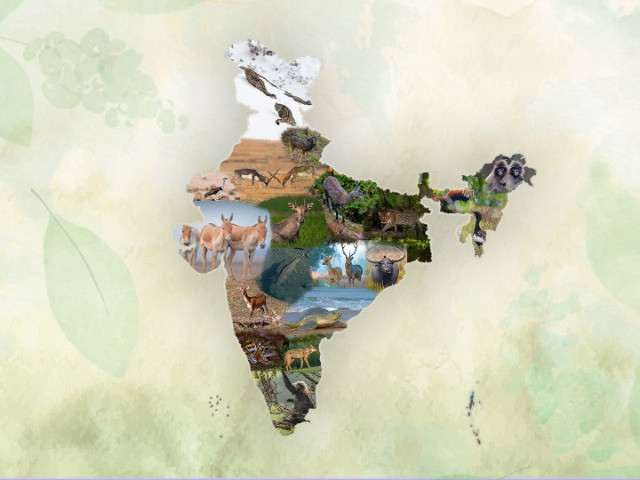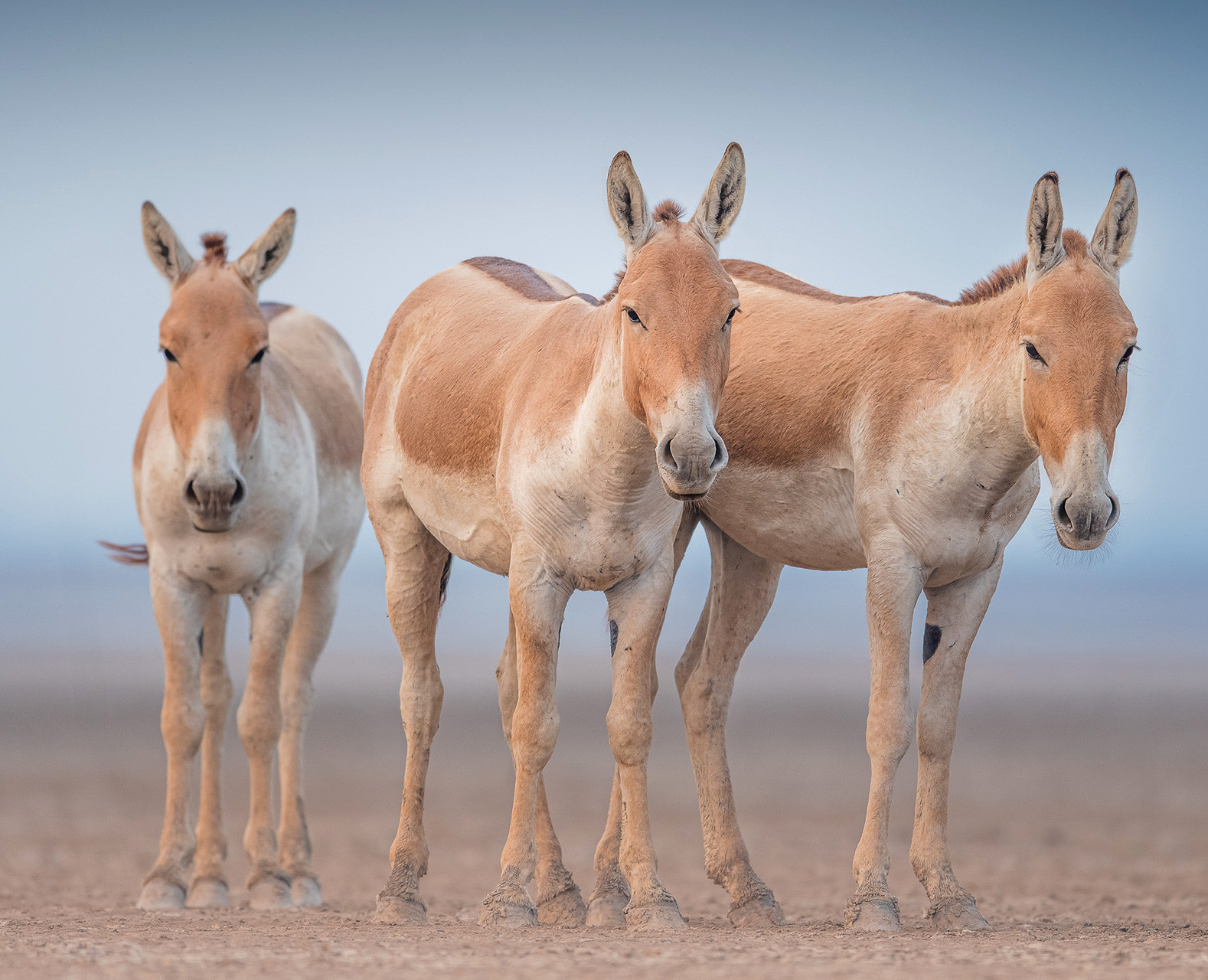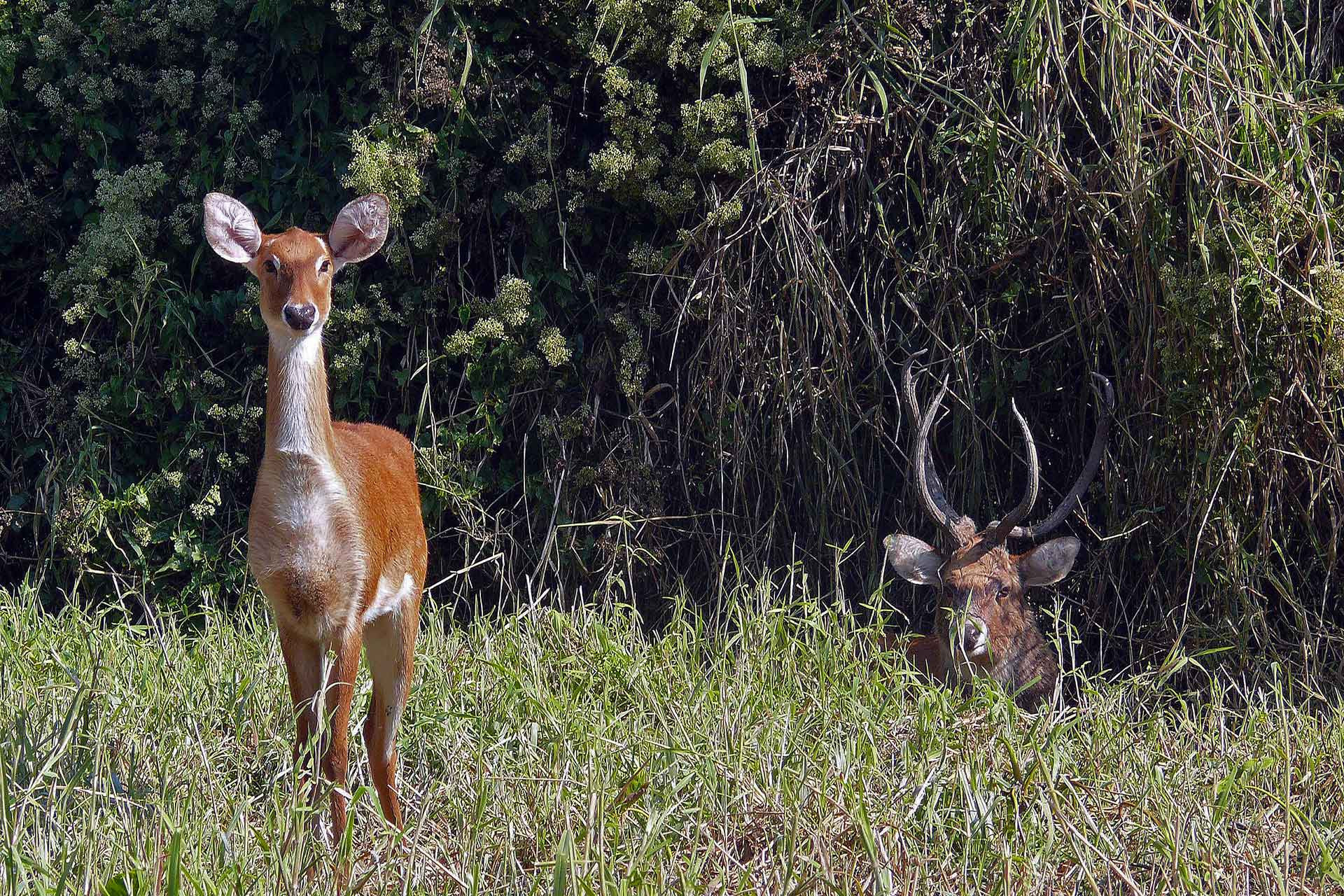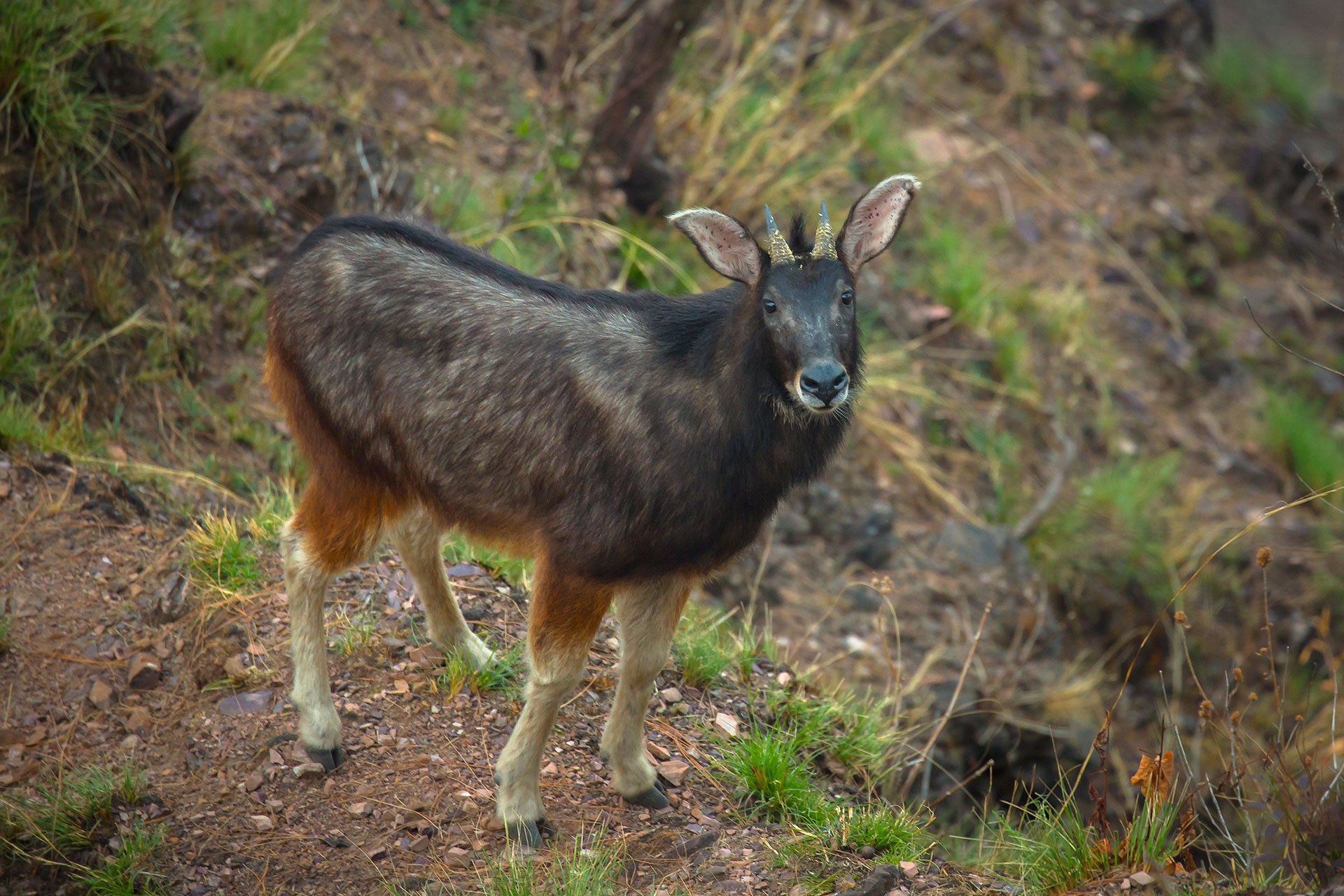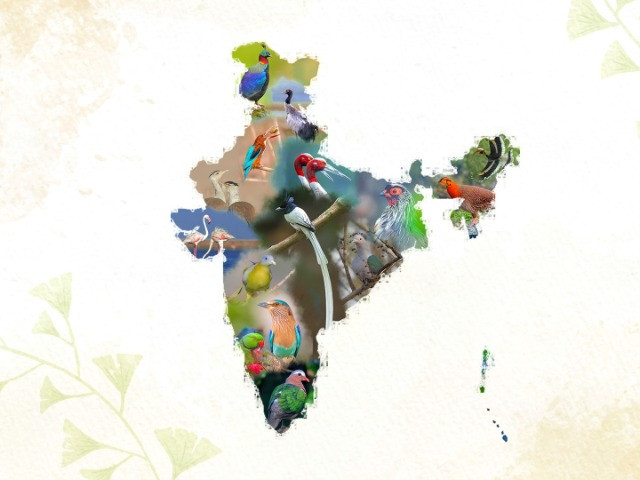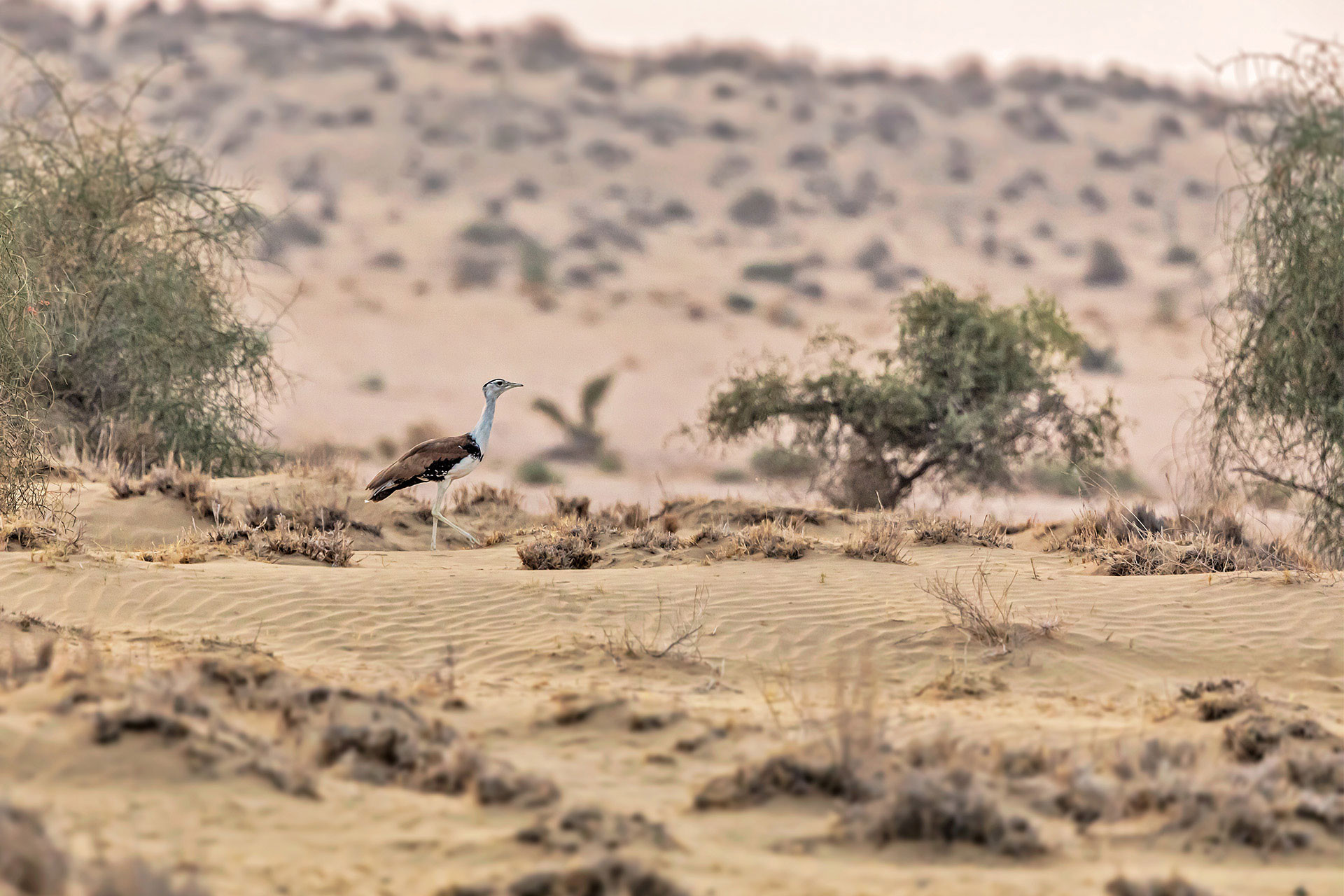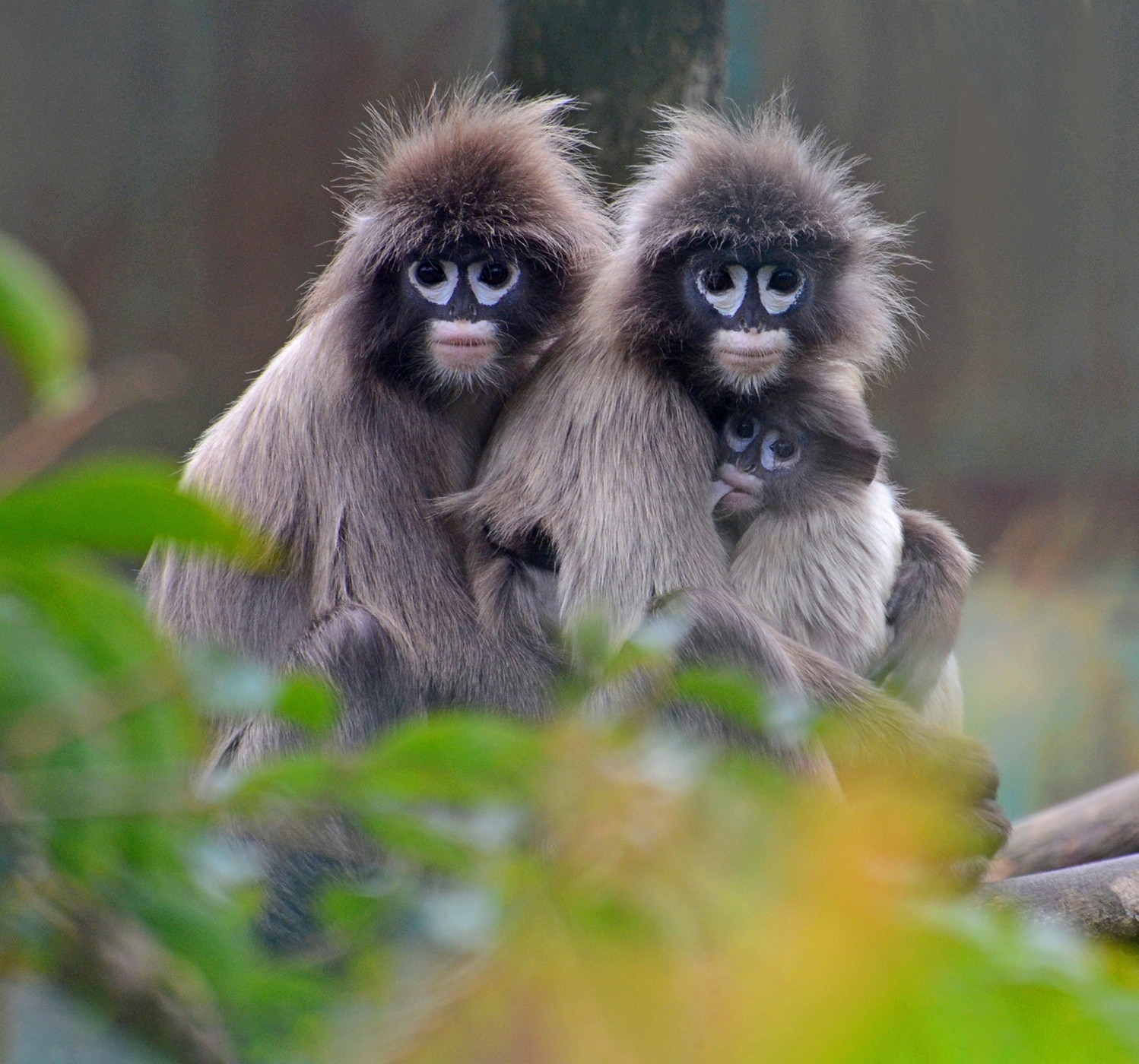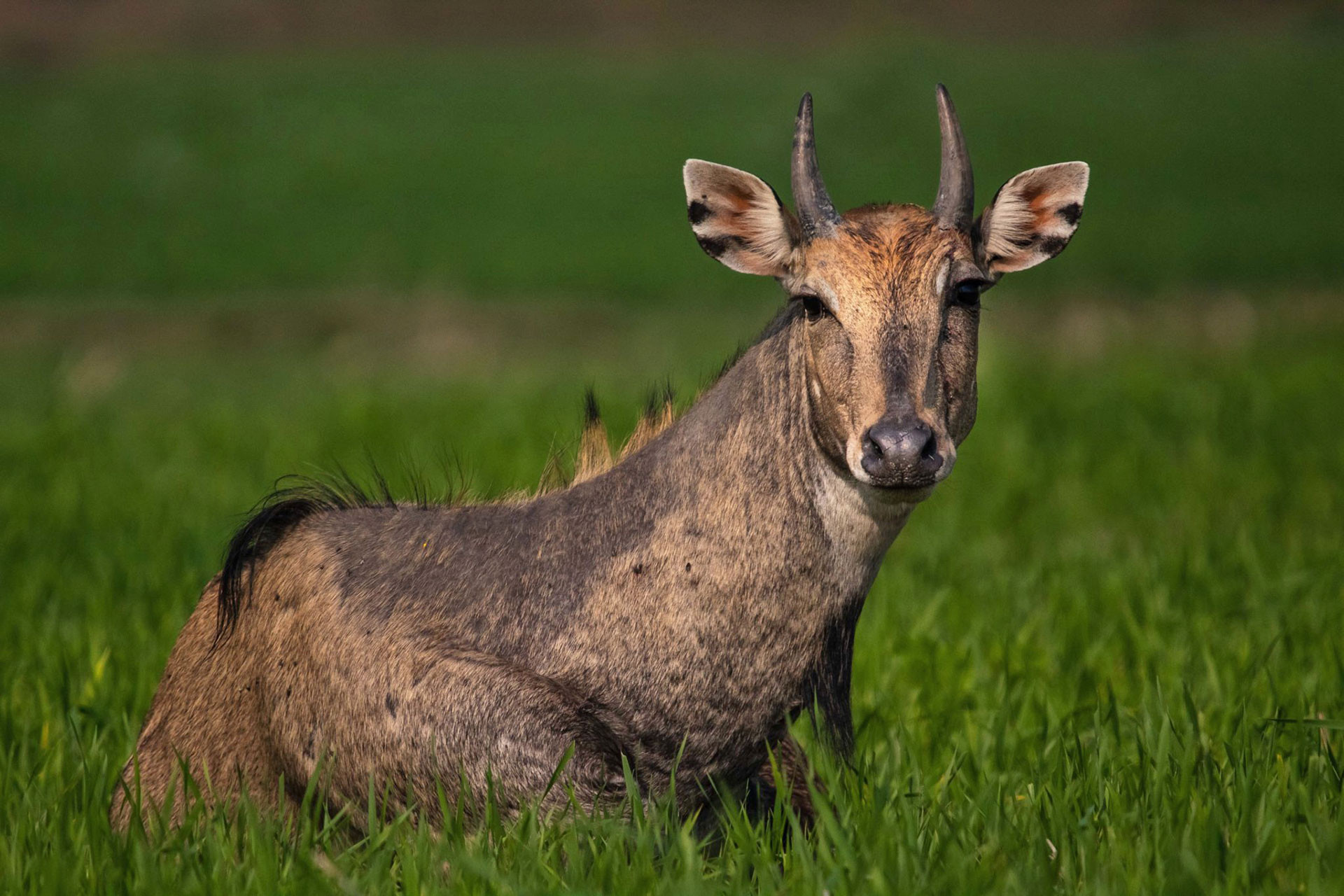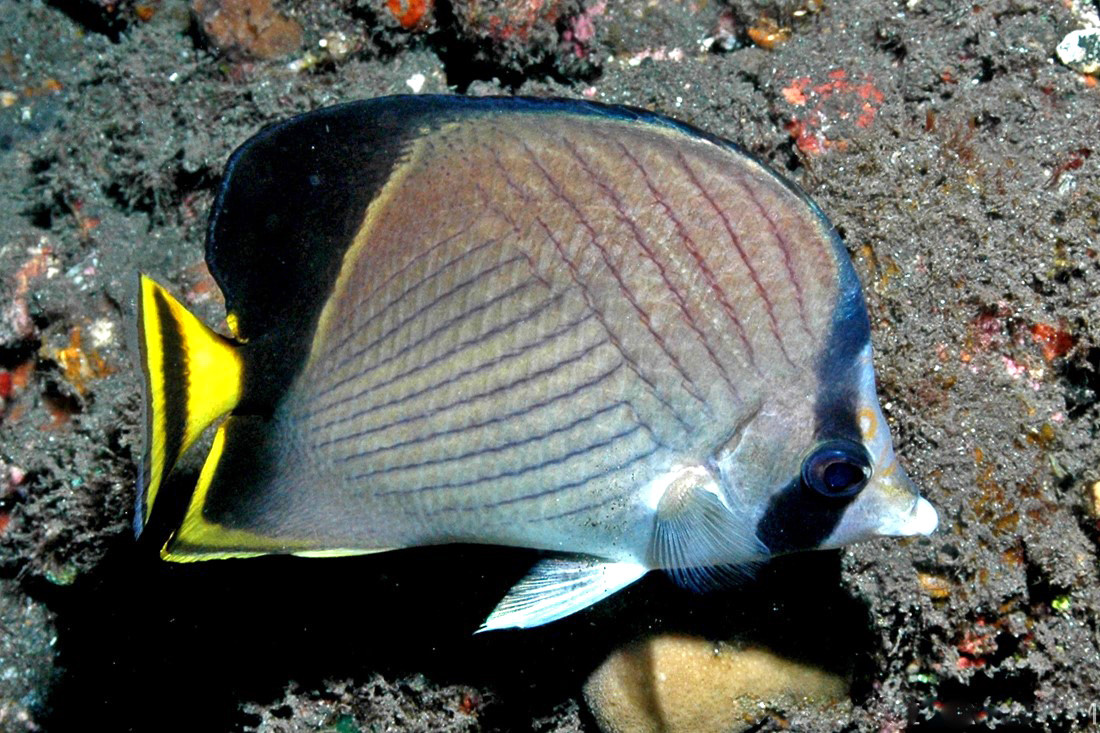Time for a pop quiz!
On a piece of paper, write down the number of animal species from India that you can name.
How many did you get? 20? 30? A few more?
India is home to 7-8 per cent of all the documented species in the world! Although it would be difficult to get an exact count, it is estimated that our country houses about 91,000 faunal species and 45,000 floral species! Which makes the numbers on our list about 0.00000...well, let's not get into the math and call it a meagre account of all that is around us.
We can never really learn about them all, but we can pay attention to the ones we know and try to understand their roles across the various ecosystems found within our megadiverse nation. In this list of iconic species from every state and union territory in the country, we introduce you to some well-known, some lesser-known, some unknown, some new and some old—each unique and representative of their respective regions. Of course, by no means is this an exact or exhaustive list. We hope you can add to this and share your knowledge about some of the animals and plants that are unique to your state.
Time to take a trip across the country. Buckle up!
The team wishes to thank Karthikeyan S. for his inputs.
Andhra Pradesh
Peacock Tarantula (Poecilotheria metallica)
IUCN Red List Status: Critically Endangered
A large spider with a distinct metallic sheen, the Peacock Tarantula is hard to miss, that is, if you get to see one. The spider has a short range and was first spotted in a 100sq.km. area between Nandyal and Giddalur in Andhra Pradesh. In 2013, a second sighting was recorded by researchers in the Seshachalam Biosphere Reserve. The Peacock Tarantula resides in dry deciduous forests and the loss of its native habitat is a significant threat to its meagre population. Another reason why the Gooty Spider, as it is also called, is listed as Critically Endangered is that it is a sought-after spider species in the illegal pet trade network.
Arunachal Pradesh
Kaiser-i-Hind (Teinopalpus imperialis)
IUCN Red List Status: Near Threatened
Kaiser-i-Hind which translates to ‘Emperor of India’ is a rare species of the swallowtail family and was declared the state butterfly of Arunachal Pradesh in 2021. Identified by its iridescent green colour, the elusive butterfly prefers high-altitude forest areas as its habitat. It is usually seen flying at the canopy level, descending to lower vegetation levels just before the onset of rain. The dark underside enables it to camouflage well. Not much is known about its population status or threats specific to the species.
Assam
Bengal Florican (Houbaropsis bengalensis)
IUCN Red List Status: Critically Endangered
Bengal Floricans are large birds that prefer to spend their days foraging in grasslands, feeding on insects, grasshoppers, frogs and other denizens hidden within. The male florican is identified by its distinct black and white plumage. Or, simply wait for the breeding season when you can see them jump and leap above the tall grass in an attempt to impress females. Female floricans exhibit brown-coloured plumage. The state of Assam with its vast grasslands provides the ideal habitat for the bird. Assam’s Manas National Park and the adjacent Kokilabari Seed Farm house more than half of the state’s Bengal Florican population. With their habitats rapidly giving way to developmental projects and agricultural land, the number of extant species has now dwindled to less than 1000. Most floricans now survive within small grassland patches in the midst of agricultural and human-occupied areas.
Read More: Of Perilous Flights And Fragmented Habitats
Bihar
Ganges River Dolphin (Platanista gangetica ssp. gangetica)
IUCN Red List Status: Endangered
One of the oldest river dolphin species to survive, the Ganges River Dolphin was once present in rivers across India, Bangladesh and Nepal. The species prefers deep water regions around the confluence of rivers. Habitat degradation, pesticide pollution in rivers and the reduction in prey base have greatly impacted local populations in the country. Additionally, they are hunted for the oil extracted from their body which is used for medicinal preparations. Established in 1991, the Vikramshila Gangetic Dolphin Sanctuary in Bihar extends over a 60km stretch on the river Ganges and provides the endangered species with a suitable protected habitat.
Read More: Understanding Rivers And Their Less Privileged Denizens
Chhattisgarh
Wild Water Buffalo (Bubalus arnee)
IUCN Red List Status: Endangered
With the biggest horns among all living bovids and sporting a distinct grey-coloured coat, the Wild Water Buffalo is found near floodplains, swamps, wet grasslands and riverine ecosystems with dense vegetation. The endangered bovine faces several threats, with habitat degradation topping the list. The buffalos often share habitats with other cattle, making them susceptible to various cattle-borne diseases that drastically impact local populations. Despite being designated as the state animal of Chhattisgarh, retaliatory killing of Wild Water Buffaloes here, in response to incidents of crop raids is a cause for concern.
Read More: The Wild Water Buffalo Population In Assam Is Under Threat
Goa
Goan Shadow Dancer (Idionyx gomantakensis)
IUCN Red List Status: Unknown
Endemic to the Western Ghats, the Goan Shadow Dancer is a dragonfly species that belongs to the Synthemistidae family. It was first sighted in the Collem region of Goa in 2008 during a survey of odonate diversity in the state. Dragonflies that belong to the Idionyx genus are referred to as ‘Shadow Dancers’ as they exhibit jumpy flights and prefer overcast conditions.
Gujarat
Indian Wild Ass (Equus hemionus khur)
IUCN Red List Status: Near Threatened
Also known as Khur, the Indian Wild Ass was once present throughout the western region of India along with southern Pakistan. Their range is now restricted just to the Little Rann of Kutch in Gujarat. Shrinking habitats due to agricultural expansion and change in land use patterns are impacting the onager populations in the region. With several populations living outside the protected area, human-animal conflicts are also on the rise.
Read More: Little Rann Of Kutch—A Travel Guide
Haryana
Blackbuck (Antilope cervicapra)
IUCN Red List Status: Least Concern
Known for the spiralling horns that adorn the males of the species, Blackbucks inhabit grasslands and scrublands that are close to abundant water sources. Once common across plains throughout the Indian subcontinent, Blackbucks today reside in smaller pockets. In Haryana, the Blackbuck holds the title of state animal and used to be ubiquitous throughout its landscape. But a recent study showed that the animal’s range is now restricted to the southwest part of the state and is almost extinct in other areas. Although designated as ‘Least Concern’ on the IUCN Red List, the antelope species is facing the brunt of habitat loss and modification.
Himachal Pradesh
Snow Leopard (Panthera uncia)
IUCN Red List Status: Vulnerable
Masters of camouflage, Snow Leopards are elusive felids that reside in the Himalayan mountain ranges, thus earning them the moniker of Grey Ghost of the Himalayas. The Kibber Wildlife Sanctuary in Spiti Valley, Himachal Pradesh, where they are often sighted, provides them with an ideal habitat. They expertly blend into their rocky surroundings and manoeuver the snow-clad slopes with ease, using their long tails, wide paws and shorter front legs. A range of threats imperils the species in India, including human encroachment of their habitats, reduction of prey base, retaliatory killings and hunting. Apart from these threats, the rise in temperatures across habitats is affecting the populations of this magnificent cat.
Read More: 10 Things You Need To Know About Snow Leopards
Jharkhand
Magadha Burrowing Frog (Sphaerotheca magadha)
IUCN Red List Status: Not available
Initially sighted in 2015 in the Chota Nagpur plateau, Jharkhand, the Magadha Burrowing Frog is the first frog species to be discovered from the Jharkhand and Bihar region. The smallest frog in the Sphaerotheca genus, frogs of this family are often found near agricultural areas. Many of the species in this genus have been discovered from the Western Ghats or in coastal regions, making this particular discovery a significant finding.
Karnataka
Hubbardia heptaneuron
IUCN Red List Status: Vulnerable
Hubbardia heptaneuron is a rare grass species endemic to the state of Karnataka. The grass species has an unusual habitat preference—it grows on concealed steep rocky surfaces that are moistened by spray from waterfalls and mist. A research team from the Botanical Survey of India found local populations at Jog Falls and Arsenagundi Falls in the state. The widening of roads and other developmental projects like the construction of dams are the most significant threats to the species. Another study also determined that its restricted range could be the result of habitat specificity and poor dispersal of seeds.
Kerala
Miss Kerala (Sahyadria denisonii)
IUCN Red List Status: Endangered
Also known as the Denison Barb and Red Line Torpedo Barb, the aquatic species belongs to the Cyprinidae family and is endemic to Kerala and Karnataka. Small populations of the barb are seen in river systems like Chaliyar, Chandragiri, Kallar, Bharatapuzha, among others. The fish resides in streams with overhanging vegetation on the banks. Apart from the decline in habitat quality, pet trade and capture of juveniles for fisheries are the major threats to the species.
Madhya Pradesh
Barasingha (Rucervus duvaucelii)
IUCN Red List Status: Vulnerable
Swamp Deer or Barasingha is named after the number of tines in their antlers. A distinct behavioural attribute of the species is decorating their antlers with grass and vegetation during the breeding or the rutting season. The animal prefers grasslands in general, although populations occupy different habitats, for example, tall grasslands or those enclosed with trees, based on their location. Habitat fragmentation and conversion of grasslands into agricultural fields are the most significant threats to the species. The deer species is Madhya Pradesh’s state animal and a successful breeding programme at the Kanha National Park made it possible to revive its population in Central India from near extinction.
Read More: Kanha National Park—A Travel Guide
Maharashtra
Amboli Toad (Xanthophryne tigerina)
IUCN Red List Status: Critically Endangered
Endemic to the Western Ghats with a limited geographic range, and restricted to the Amboli hill station in Maharashtra, the Amboli Toad is also known as the Konkan Tiger Toad. The medium-sized toad is identified by the yellow-black markings on the sides and the lack of webbing on the limbs. The Amboli Toad needs evergreen forests for survival, and the loss of forest cover is a major threat to the species.
Read More: Amboli—A Travel Guide
Manipur
Sangai (Rucervus eldii eldii)
IUCN Red List Status: Endangered
Also known as Dancing Deer, Eld’s Deer or Brow-antlered Deer, the Sangai is identified by its distinct antlers, with the ones in the front appearing to emerge from its eyebrows. Sangais have an extremely restricted range that extends over a 20sq.km. area in the Keibul Lamjao National Park in Manipur. Here, they occupy floating lakes, locally known as Phumdi, a combination of vegetation, accumulated organic debris and soil that floats above the water and hosts a diverse range of species. Artificial storage of water and repeated floods impact their habitats, placing these medium-sized deer under constant threat. According to a recent study, the Sangai’s habitat will undergo further degradation in the next decade owing to the climate crisis.
Meghalaya
Pitcher Plant (Nepenthes khasiana)
IUCN Red List Status: Endangered
The species is India’s only known pitcher plant and is largely endemic to the Khasi Hills in Meghalaya, after which it is named. It has also been recorded from the Garo and Jaintia Hills of Meghalaya. The carnivorous pitcher plants capture insects for sustenance using their modified pitcher-shaped leaves that are filled with a digestive fluid. The Khasi people are known to call the plant tiew-rakot which translates to demon-flower. The plant is a protected species and is also listed in CITES. The increase in shifting cultivation and mining activities within the region has put the species under threat. It is estimated that by 2003 about 40 per cent of the population had declined, but more accurate assessments are needed to comprehend the population status and the impacts of various threats.
Mizoram
Himalayan Serow (Capricornis sumatraensis thar)
IUCN Red List Status: Vulnerable
A subspecies of the Mainland Serow, the Himalayan Serow is a medium-sized mammal identified by its black coat and the red colour on its upper legs. Recognised as the state animal of Mizoram, Himalayan Serows are found in altitudes between 6,500 and 13,000 feet. With a significant decline in the herbivore’s habitats, the previously Near-Threatened serow species is now listed as Vulnerable. In 2015, more than 20 Himalayan Serows were found dead in Mizoram due to a mysterious illness. The incident also highlighted the lack of veterinary expertise to treat the mammal.
Nagaland
Amur Falcon (Falco amurensis)
IUCN Red List Status: Least Concern
Amur Falcons are the longest travelling raptors in the world. Their annual trips range over 20,000km across continents. Amur Falcons migrate from their breeding grounds in China to southern Africa during the winter season, making a stop at Nagaland during this journey. People from all over the country visit the state to witness thousands of falcons congregating in the region. In fact, the Doyang Reservoir in Nagaland is said to host the single largest congregation of Amur Falcons in the world! In 2012, the massacre of nearly 14,000 Amur Falcons in the Pangti village of Nagaland raised alarm bells across the globe. The episode resulted in a swift response from communities, the Government and the Forest Department. Today, the same place acts as a shining example for wildlife conservation.
Odisha
Olive Ridley Sea Turtle (Lepidochelys olivacea)
IUCN Red List Status: Vulnerable
The Gahirmatha beach in Odisha is one of the world’s largest nesting sites for the Olive Ridley Sea Turtle. In May 2021, it was reported that about 1.48 crore baby turtles hatched here. Olive Ridleys are named after their olive-coloured shells. The species requires a range of habitats for its survival. While females lay their eggs on sandy beaches, the juveniles emerge and enter the ocean waters, where they continue to grow and migrate long distances from their nesting sites. Sexually mature adults then return to the coastal areas for reproduction. Olive Ridleys face several threats including anthropogenic modification of their nesting sites, being captured as bycatch, diseases and marine pollution.
Read More: The Olive Ridley Undertaker
Punjab
Red Sand Boa (Eryx johnii)
IUCN Red List Status: Near Threatened
The largest sand boa species globally, Red Sand Boas are nocturnal non-venomous reptiles. They spend most of their days hidden underground and are residents of areas with sparse vegetation and deserted land with loose soil. The dry plains of Punjab host an ideal habitat for this reptile species. Although habitat degradation was a significant concern, a more emerging and serious threat is the illegal trade of Red Sand Boas. Fueled by superstitions and a lack of awareness, the reptiles are widely sought after and even stolen from zoos across the country. International trade of Red Sand Boas are restricted under CITES. They are also hunted for their perceived medicinal benefits.
You may also like to read
Rajasthan
Great Indian Bustard (Ardeotis nigriceps)
IUCN Red List Status: Critically Endangered
With an estimated 150 extant individuals, the Great Indian Bustard is on the very brink of extinction. Once found in grasslands across the country, the bird now mainly seeks refuge in the Desert National Park in Rajasthan. Historically, bustards have been hunted for their meat. They now face other threats such as loss of habitat, collision with electric lines and wind turbines, and hunting. Although several conservation efforts are underway, greater awareness and community participation is required to implement effective protection measures to save the iconic Great Indian Bustard.
Read More: Desert National Park—A Travel Guide
Sikkim
Red Panda (Ailurus fulgens)
IUCN Red List Status: Endangered
Known for its fiery red and white coat, the elusive Red Panda is an arboreal panda species that prefers montane, broadleaf forests and bamboo thickets as habitats. The eastern Himalayas contribute to 50 per cent of their habitats and Red Pandas are Sikkim’s state animal. Habitat loss and fragmentation are some of the biggest threats to the species. Red Pandas follow a vegetarian diet and mainly feed on young shoots and leaves of the bamboo plant. These plants are susceptible to the impacts of deforestation—reduced canopy cover and temperature changes—which in turn affects the panda’s food source, adding to their woes.
Read More: The Firefox In Our Forests
Tamil Nadu
Nilgiri Langur (Semnopithecus johnii)
IUCN Red List Status: Vulnerable
The Nilgiri Langur is endemic to the Nilgiri Hills and its range extends across the states of Tamil Nadu, Kerala and Karnataka. Nilgiri Langurs are also known as Black Leaf Monkeys or Hooded Indian Leaf Monkeys. They are usually found in troops of about 20 female langurs accompanied by one dominant male, with other males forming separate groups. Their habitats are greatly affected by human activities, and the langurs are also hunted down for their skin and other body parts, which are used in traditional medicine. Nilgiri Langurs feed on leaves, shoots, fruits and seeds, foraging through a diverse range of plants at any given time. As their habitats get altered, their food sources are also widely impacted.
Read More: Seven Of India's Primate Species Are In Danger
Telangana
Indian Wolf (Canis lupus pallipes)
IUCN Red List Status: Endangered
Indian Wolves are a subspecies of the Grey Wolf and are found throughout the subcontinent. Indian Wolves reside mainly in forests, scrublands and semi-arid grasslands. Telangana provides a semi-arid landscape with dry deciduous forests that are ideal for Indian Wolves. They are often hunted in response to attacks on livestock. Apart from retaliatory killings, habitat loss and depletion of prey base are some of the biggest threats to the local wolf populations.
Read More: Meet The Wild Canids Of India
Tripura
Phayre's Leaf Monkey (Trachypithecus phayrei)
IUCN Red List Status: Endangered
Known for the distinct white patches around their eyes, Phayre’s Leaf Monkeys are nocturnal, leaf-eating primates that reside in deciduous, evergreen and semi-evergreen forests in the northeastern parts of India, mainly in Cachar, Tripura and Mizoram. The Sepahijala Wildlife Sanctuary in Tripura is a key habitat area for the spectacled monkey. Their habitats have undergone severe fragmentation due to the rampant clearing of forests for plantation and developmental activities. The endangered monkey is also hunted for its meat and for the preparation of traditional medicines.
Read More: Seven Of India's Primate Species Are In Danger
Uttar Pradesh
Gharial (Gavialis gangeticus)
IUCN Red List Status: Critically Endangered
Gharials (also known as Gavial) belong to the reptile family that also consists of crocodiles, alligators and caimans. They get their name from the word ghara which means pot, owing to the pot-like knob at the end of their snout. Historically found in rivers across Bhutan, India, Pakistan, Myanmar, Nepal and Bangladesh, Gharials are now present in only 2 per cent of their original range. In India, the reptiles are found in river systems such as Son, Chambal, Ramganga, Gandak and other tributaries of the Ganges. The Katarniaghat Wildlife Sanctuary located on the banks of the Sarayu river in Uttar Pradesh forms an important habitat for the species. Fast-flowing rivers are vital for the Gharials and the construction of dams and embankments greatly alters their habitats, affecting the populations downstream. Other threats include river interlinking projects, the extraction of water for agricultural usage, and pollution of water bodies.
Read More: National Chambal Sanctuary—A Travel Guide
Uttarakhand
Alpine Musk Deer (Moschus chrysogaster)
IUCN Red List Status: Critically Endangered
Native to the eastern Himalayas, the Alpine Musk Deer belongs to the Moschidae family. The deer species is distributed throughout the Himalayas, usually between 2000 and 5000m above sea level. These herbivores feed on grasses, lichens, shoots, flowers and roots. The deer is widely hunted for its musk that is used for cosmetic purposes. They are also victims of the illegal animal trade. Alpine Musk Deer require dense forest areas for survival, and increased deforestation is adding to their threats.
West Bengal
Fishing Cat (Prionailurus viverrinus)
IUCN Red List Status: Vulnerable
The Fishing Cat was declared as the state animal of West Bengal in 2018 and the cat species is referred to as mach-baghrol or fish-tiger in the local language. Fishing Cats can be easily distinguished from domestic cats due to their large size and stocky legs. Found near water bodies, marshlands and mangrove forests, they are agile swimmers and feed on fish, reptiles, birds and carcasses of other animals. Fishing Cats in the state often share space with people who are dependent on aquaculture for livelihood. Conflict situations arise when the felids deplete the fish populations in the water bodies, which sometimes leads to retaliatory killing of the cats. Apart from human-animal conflicts, increased destruction, alteration and pollution of mangrove forests and wetlands are the major threats to the existing fishing cat populations across India. They are amongst the most vulnerable small and medium-sized felids and swift conservation measures are required to prevent their extinction.
Read More: Two Tales Of A Cat
Andaman and Nicobar Islands
Dugong (Dugong dugon)
IUCN Red List Status: Vulnerable
Commonly known as Sea Cows, Dugongs are marine mammals that primarily feed on seagrasses in shallow coastal areas. The state animal of Andaman and Nicobar Islands, Dugongs, locally known as paani suar, are commonly seen in the ‘Dugong Creek’ in Little Andaman. Alteration of coastal habitats, trawling, incidental captures during fishing, pollution of marine ecosystems and the impacts of changing environments on the growth of seagrass have cumulatively affected Dugong populations. Dugong conservation has shed light on the importance of shallow marine habitats and the diverse species that depend on this ecosystem.
Read More: A Sea Of Knowledge
Chandigarh
Nilgai (Boselaphus tragocamelus)
IUCN Red List Status: Least Concern
Nilgais or Blue Bulls are indigenous to the subcontinent and are a common sight across the northern parts of the country. Habitat generalists, the antelope species can be found in dry deciduous areas, scrublands and near agricultural fields. Nilgais are considered agricultural pests, and their increasing populations is a concern for the farming communities. Farmers use fencing and other protective measures to prevent them from entering crop fields. The animals also feed on unattended garbage in human-occupied areas, thus getting exposed to harmful chemicals and plastic waste. Retaliatory killings of Nilgai for crop damage is unfortunately a frequent occurrence.
Dadra and Nagar Haveli
Four-horned Antelope (Tetracerus quadricornis)
IUCN Red List Status: Vulnerable
Occupants of wooded areas with tall grasses, this antelope species is only found in India and Nepal. Four-horned Antelopes or Chousingha are rarely sighted in the open, and they are quick to hide in the surrounding vegetation when they sense danger. The landlocked moist deciduous forests of Dadra and Nagar Haveli located in the northern parts of the Western Ghats provide the right habitat for the antelopes. They are also seen in the Satmalia Deer Sanctuary in the region. Conversion of grasslands for agricultural purposes and clearance of forest areas for developmental activities are some of the major threats that plague the Chousingha.
Daman and Diu
Whale Shark (Rhincodon typus)
IUCN Red List Status: Endangered
Following in the footsteps of Porbandar, Gujarat, the coastal city of Diu adopted the Whale Shark as its mascot, pledging to protect the species. The Gujarat government has worked tirelessly to spread awareness about the world’s largest fish species. The state’s coastline is India’s longest, and along with Daman and Diu, trawling in the region accounts for around 50 per cent of India’s annual shark landings. Whale Sharks are found in the tropical oceans and occur in specific temperature zones. They occupy coastal and oceanic habitats, spending most of their time in the epipelagic zone. Overfishing, capture as bycatch and habitat intrusion due to recreational activities are the major threats to the endangered species. According to a recent assessment by the IUCN, the species is threatened across its range. Specific efforts over the next decade will aid in the low-level stabilisation of the populations.
Read More: Joining The Dots
Delhi
Greenish Warbler (Phylloscopus trochiloides)
IUCN Red List Status: Least Concern
The capital is a hotspot for migratory bird species, with many of them seen here first before they travel further south of the country. The Greenish Warbler is one such traveler, a tiny bird that migrates incredible distances. The warbler breeds in Europe before moving to the northern parts of India in August and then migrating further south of the country towards the end of the year. Identified by their olive-green plumage and white breast, these forest dwellers prefer lowland deciduous and mixed forests as habitats. In urban spaces, they seek densely wooded areas and nest in shrubs.
Jammu and Kashmir
Hangul (Cervus hanglu hanglu)
IUCN Red List Status: Critically Endangered
For the only surviving elk subspecies, the Hangul or the Kashmir Stag, grasslands and meadows in mountainous regions are the preferred habitats. Once widely distributed across riverine forests, it is estimated that there are only about 100-150 mature individuals left in the wild. Overgrazing of grasslands and fragmentation of their habitats has pushed the Hangul to the brink of extinction. More recently, industrial growth around Dachigam National Park near Srinagar, where the deer are found, is also a cause for concern.
Ladakh
Himalayan Brown Bear (Ursus arctos isabellinus)
IUCN Red List Status: Critically Endangered
The Himalayan Brown Bear is a subspecies of the Brown Bear (Ursus arctos). Large bears with thick fur which is often reddish-brown to sandy in colour, an adult male can weigh up to 400kg. The potential brown bear distribution range in India is just about 36,800 sq.km., of which 8,800sq.km. falls within the Trans-Himalayan region of Ladakh. PhD scholar Niazul Hassan Khan, who is researching the ecology of Himalayan Brown Bears, earmarks the Kargil region of Ladakh. "By the end of my year-long study, I had observed a whopping 21 brown bears in the 405 sq.km. of Kugti Wildlife Sanctuary," he writes. Living in close proximity to humans, the bears in the region raid livestock and orchards (particularly just before and after hibernation), often leading to human-bear conflicts.
Read More: The Brown Bears Of Kargil
Lakshadweep
Indian Vagabond Butterflyfish (Chaetodon decussatus)
IUCN Red List Status: Least Concern
Situated off the west coast in the Arabian Sea, the Lakshadweep archipelago is India's only coral island chain. The Indian Vagabond Butterflyfish, a ray-finned fish found in coral-rich marine ecosystems of the Indo-West Pacific, is recognised as the state fish of the Lakshadweep islands. The species has a silver body marked with grey lines, a black band near the eyes, and yellow markings on its tail. The butterflyfish is a benthic (bottom of the sea) feeder, even feeding on live corals.
Puducherry
Red Lionfish (Pterois volitans)
IUCN Red List Status: Least Concern
Native to the Indo-Pacific region, the Red Lionfish is a coral reef fish in the family Scorpaenidae. Painted like a maroon/red and white zebra, this distinct-looking fish has large, venomous spines protruding from its body. A common sight when diving off the coast of Puducherry, these lone rangers can be dangerous when they feel threatened, and therefore divers are advised to maintain a safe distance.
